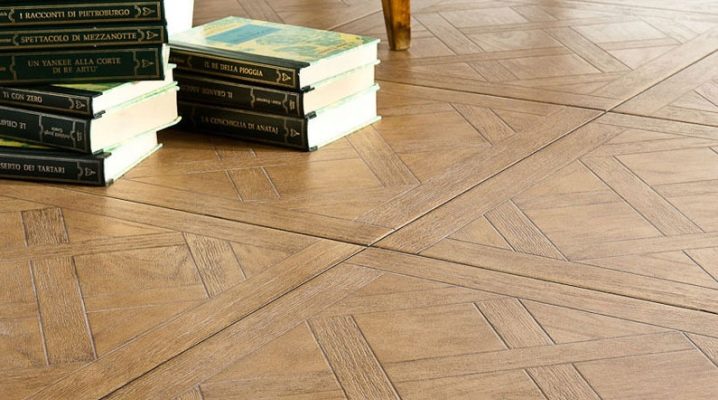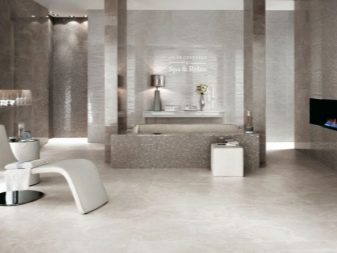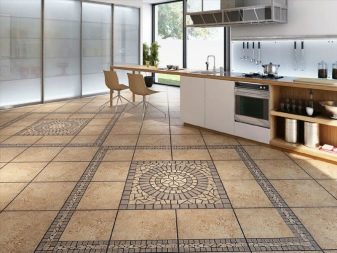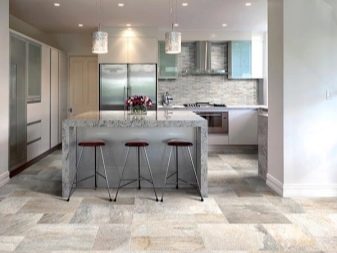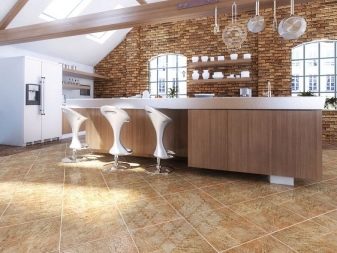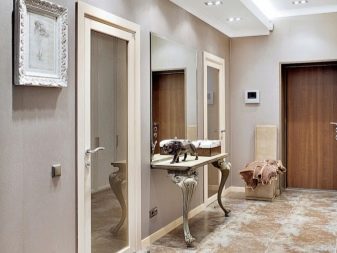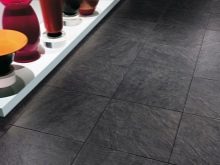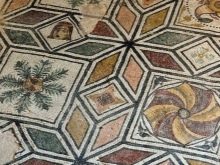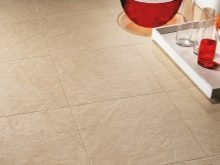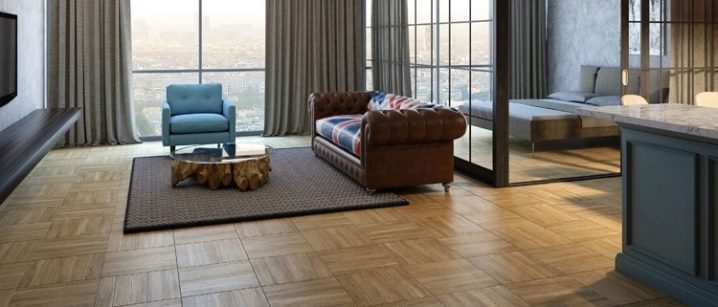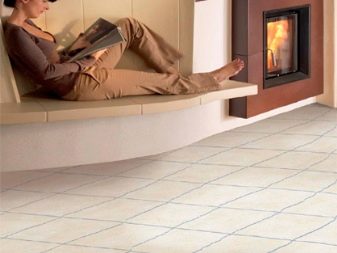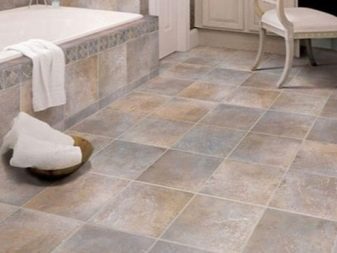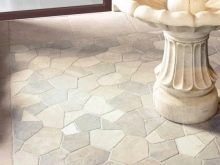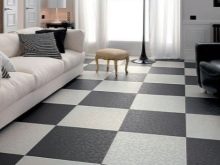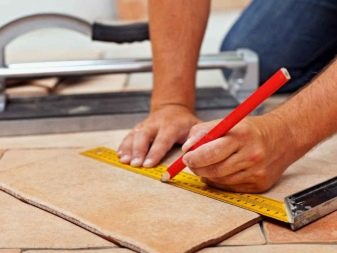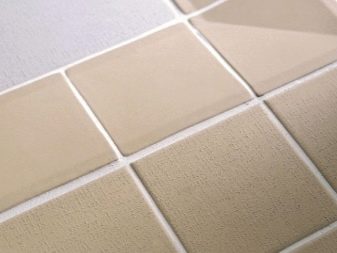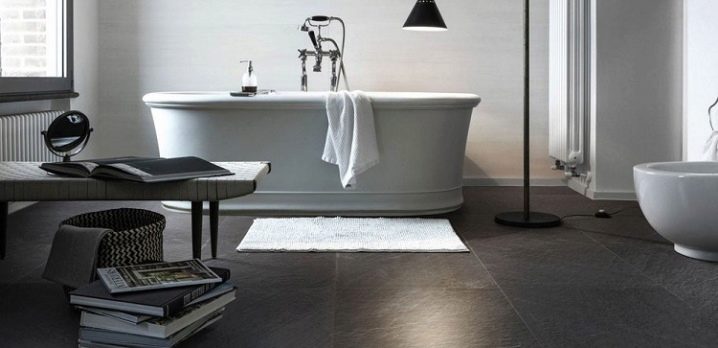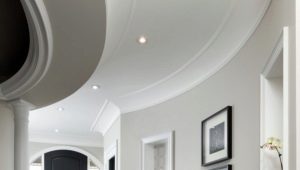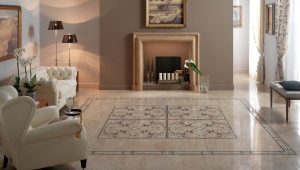Non-slip floor tiles: features of choice
The floor covering is mainly selected for external beauty, they are guided by its strength, durability and price. But there is one more parameter that cannot be ignored when a tile is selected for the floor. We are talking about her tendency to slip, and everyone wants this figure to be the smallest.
Special features
Since ancient times, the floors in elite houses have been lined with granite stone, since it is it that has the best strength and at the same time practically does not slip. Modern technologies have made it possible to make a coating on a granite basis more widespread and affordable, it is represented primarily by special tiles. Porcelain stoneware has been used in interior decoration for more than three decades, for the first time it was developed by Italian technologists.
It should be noted that ceramic granite is not one type of material, but a whole group of species, each of which is ideal only in specific operating conditions.
When comparing natural stones and porcelain tiles, it becomes obvious that they differ in a number of properties. Specificity manifests itself in terms of resistance to frost, and the level of water absorption, and resistance to aggressive substances. Suffice it to say that artificial ceramics absorb 10 times less water, all other things being equal, than first-class natural stone grades.
Species
Non-slip tiles should be used wherever safety comes first. Be sure to use it, and not more dangerous options for coverage, for registration:
- kitchens;
- passageways;
- hallways.
The anti-slip coating is obtained by additionally spraying special materials. Such a solution helps to preserve the stable qualities of the floors for a long time, even in places where many people constantly walk. Such tile is chosen for stations, official institutions, large shopping centers. At home, protection against getting wet, and not high resistance to abrasion, comes to the fore.
Antiskid ceramic tiles are classified in accordance with German standards DIN 51097 and 51130, while in Russia their rating scale has not been worked out. Indicators of resistance to sliding are usually as follows:
- R9 - where the threat of falling is the smallest;
- R10 - coverage for low-use premises;
- R11 - useful for laying in the sanitary unit, inside the shower and in similar places;
- R12 - this tile can be safely put on a car wash and in the kitchen of a large restaurant or dining room;
- R13 - and this coating is suitable even for swimming pools and serious industrial facilities.
The first three letters of the Latin alphabet mark floor coverings that are specifically designed for walking barefoot.
Tips for choosing
It is worth knowing the following nuances:
- In order not to be mistaken, you need to firmly know the main difference between non-slip porcelain stoneware from its more slippery varieties. Consumers can assess for themselves how rough the surface is and this is a very important feature. The non-slip tile also always has many grooves and grooves, other noticeable visual disturbances of normal geometry. Very useful is the presence of strips and structural details of the relief, which further enhance the adhesion.
- You can save on flooring, if you choose a material with a matte surface, it is even more than selling structured and “other” porcelain stoneware.Carefully read not only the information about the level of sliding, but also in what rooms you can use a specific type of coating. It is recommended to find out more about what compositions are applied to the treatment of the external surface; they should form a film that is invisible to the naked eye and has special grooves that increase traction when walking.
- Mosaic tiles have a maximum face size of 0.1 m; since the gaps of the blocks will be filled with copious grouting, it is easy to avoid slipping and falling, regardless of whether they are walking on the floor with or without shoes.
- The standard variety of tiles in size can reach 0.3 m, for the most part they will be square. To form a three-dimensional pattern, manufacturers use not just roughness, but also imitations of pebbles and strips, stylized asterisks, sometimes making a “grainy” coating.
- In the marking of non-slip tiles, combinations of letters and numbers are used, first the volume of the surface profile is shown, and then the proportion of elements that increase the quality of the coating to its total area. The lowest class that is generally allowed is V4: per 1 sq. M.dm total surface accounts for only 4 cubic meters. see security features. For porcelain stoneware, V10 or the highest category of protection is considered a normal marking.
Installation
It is not enough just to choose anti-slip tiles, you need to put it correctly. The basic principles are the same as when working with any ceramic finishing materials. The surface to be treated is pre-prepared:
- make the most even;
- achieve its optimum strength;
- remove the slightest dust;
- dried
The selection of adhesive mixtures and grout for filling joints is determined by the conditions in which the tile will be used. Standard flooring involves the use of conventional compositions with a high level of adhesion, but the cold tolerance indicators do not really matter.
For putting glue on the basis apply gear spatulas, then the tile is applied and press on it from above. If a deviation from the normal geometry is detected, it is possible to slightly adjust the position by hitting rubber hammers or spatula knobs.
The glue will dry out as it should be at least 2 days, and only after it has completely solidified, it is permissible to erase the seams.
How to lay the floor tiles, see the next video.
